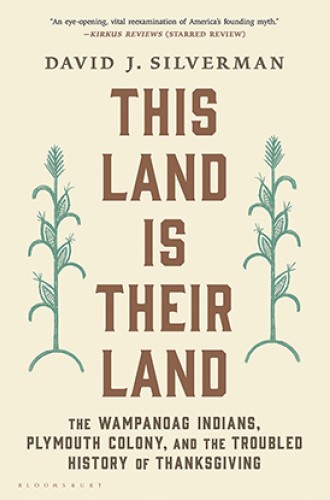Shattering the myth of the first Thanksgiving
The Wampanoags shared the gifts of the land. The colonists responded with greed and ingratitude.
Thanks to a distant cousin’s genealogy research, I know the name of my ancestor who arrived on the Mayflower. The church I serve in Minneapolis was founded by a Congregational missionary from the East Coast. So I read David Silverman’s new book with a keen awareness that colonialism is my birthright.
This Land Is Their Land begins by shattering the myth of the first Thanksgiving. As the story typically goes, the relationship between the Wampanoags and the Plymouth colonists was one of friendship, sealed with a feast of mutual gratitude. The United States was founded on this goodwill, with the blessing of God. For generations, schoolchildren have rehearsed this myth with pageants featuring Pilgrim hats, Indian feathers, and turkey crafts.
But Silverman, a history professor at George Washington University, summarizes the true relationship between the Wampanoags and the Europeans this way:






